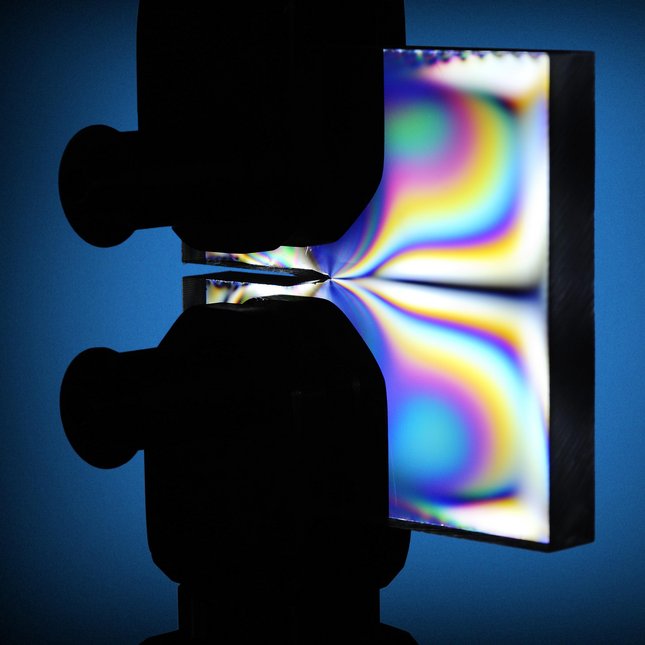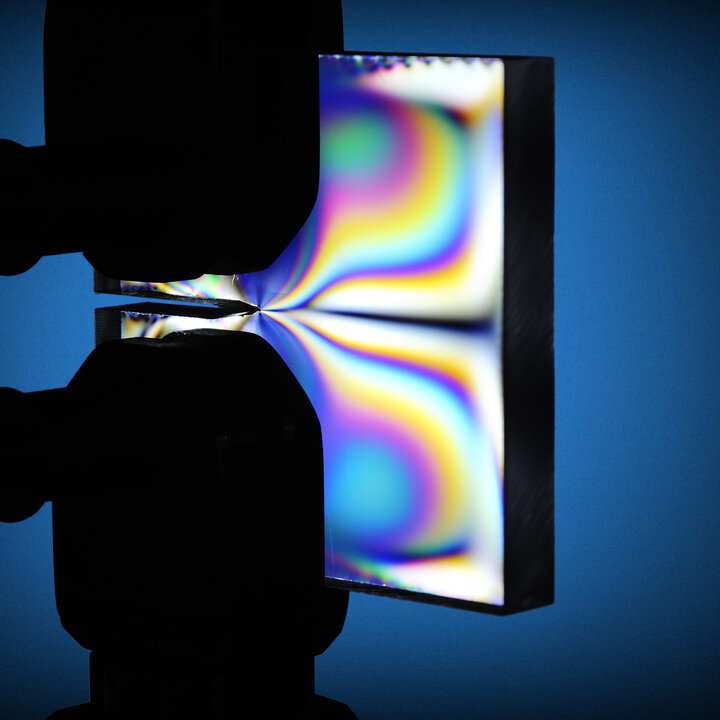
The research focuses on the development of new polymeric systems with optimal mechanical properties (toughness/strength/durability). To achieve this goal it is required that modeling of the macroscopic response of the polymeric material is based on its molecular and microscopic structure, as on those length scales materials can be controlled. This length-scale bridging is achieved by
• use of new, experimentally validated constitutive equations that capture the important features of the polymers' intrinsic deformation behaviour
• homogenisation techniques based on representative volume elements with periodic boundary conditions (multi-level FEM) that are employed to analyse the macroscopic mechanical response.
The three-dimensional non-linear viscoelastic constitutive equations are derived and improved on the basis of experimental observations and include yield, intrinsic strain softening, strain hardening and the important dependence on strain rate and temperature. New developments include the assessment of model parameters on a microscale using indentation techniques, and a numerical tool that can effectively predict the development of mechanical properties during processing of glassy polymers. Subsequently, the macroscopic response of heterogeneous polymeric systems is predicted, based on the micro-deformation. In determining the intrinsic properties of polymeric materials, a distinct length scale is experienced that shows that thin films behave different as compared to the bulk. Given the importance of thin films in modern electronic devices, e.g. poly-LEDs (light emitting diodes), LCD's (liquid crystal displays) and solar cells are based on thin films, special attention is paid to their characterization and constitutive modeling. New routes are explored to obtain specific structures of commonly brittle polymers that display a dramatic increase in their strain to break.
• Structure-Property Relations and Constitutive Modelling of Amorphous Polymers
Structure-Property Relations and Constitutive Modelling of Semi-Crystalline Polymers
The research focuses on the development of new polymeric systems with optimal mechanical properties (toughness/strength/durability). To achieve this goal it is required that modeling of the macroscopic response of the polymeric material is based on its molecular and microscopic structure, as on those length scales materials can be controlled. This length-scale bridging is achieved by
• use of new, experimentally validated constitutive equations that capture the important features of the polymers' intrinsic deformation behaviour
• homogenisation techniques based on representative volume elements with periodic boundary conditions (multi-level FEM) that are employed to analyse the macroscopic mechanical response.
The three-dimensional non-linear viscoelastic constitutive equations are derived and improved on the basis of experimental observations and include yield, intrinsic strain softening, strain hardening and the important dependence on strain rate and temperature. New developments include the assessment of model parameters on a microscale using indentation techniques, and a numerical tool that can effectively predict the development of mechanical properties during processing of glassy polymers. Subsequently, the macroscopic response of heterogeneous polymeric systems is predicted, based on the micro-deformation. In determining the intrinsic properties of polymeric materials, a distinct length scale is experienced that shows that thin films behave different as compared to the bulk. Given the importance of thin films in modern electronic devices, e.g. poly-LEDs (light emitting diodes), LCD's (liquid crystal displays) and solar cells are based on thin films, special attention is paid to their characterization and constitutive modeling. New routes are explored to obtain specific structures of commonly brittle polymers that display a dramatic increase in their strain to break.
• Structure-Property Relations and Constitutive Modelling of Amorphous Polymers
Structure-Property Relations and Constitutive Modelling of Semi-Crystalline Polymers
